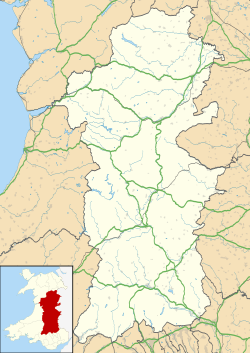| Norton | |
|---|---|
 St Andrews Church | |
Location within Powys | |
| OS grid reference | SO302670 |
| Community | |
| Principal area | |
| Preserved county | |
| Country | Wales |
| Sovereign state | United Kingdom |
| Post town | PRESTEIGNE |
| Postcode district | LD8 |
| Dialling code | 01544 |
| Police | Dyfed-Powys |
| Fire | Mid and West Wales |
| Ambulance | Welsh |
| UK Parliament | |
| Senedd Cymru – Welsh Parliament | |
Norton is a village in Presteigne community, Powys, within the historic boundaries of Radnorshire, Wales. In 1086, Norton was recorded as a settlement within the hundred of Leintwardine and in the county of Shropshire in the Domesday Book. [1]
Norton is approximately 2 miles (3.2 km) north of Presteigne.
Norton was a civil parish, at the 1971 census (the last before the abolition of the parish), Norton had a population of 250. [2] In 1974 Norton became a community, on 1 April 1983 the community was abolished. [3]

